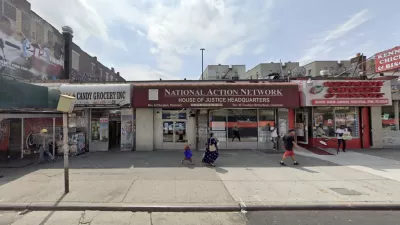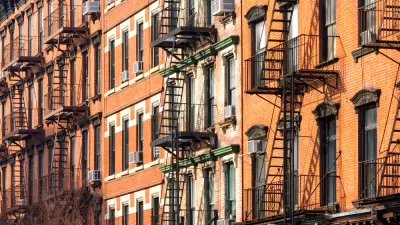From Home Depot to high-rise office buildings, Harlem's upward trend is producing "root shock," causing some residents to believe it is only a matter of time before they are displaced.
It isn't news that just two or three years ago, Harlem had a paucity of bank branches, grocery stores and other basic amenities- or that now that more affluent people have started to move there, upscale shops and restaurants have followed.
But change can have surprising results. While welcoming safer, cleaner streets, longtime residents have found themselves juggling conflicting emotions. And those who enjoyed a measure of stability in the old Harlem now long for the past - not necessarily because it was better but because it was what they knew.
'The majority of the stores, the 99-cent stores, they're gone,' said Gwen Walker, 55, a longtime resident of the General Grant Houses in West Harlem, giving one view. 'The Laundromat on the corner is gone. The bodegas are gone. There's large delis now. What had been two for $1 is now one for $3. My neighbor is a beer drinker, and he drinks inexpensive beer, Old English or Colt 45 or Coors - you can't even buy that in the stores. The stores have imported beers from Germany. The foods being sold - feta cheese instead of sharp Cheddar cheese. That's a whole other world.'"
FULL STORY: Mixed Feelings as Change Overtakes 125th St.

Planetizen Federal Action Tracker
A weekly monitor of how Trump’s orders and actions are impacting planners and planning in America.

Maui's Vacation Rental Debate Turns Ugly
Verbal attacks, misinformation campaigns and fistfights plague a high-stakes debate to convert thousands of vacation rentals into long-term housing.

San Francisco Suspends Traffic Calming Amidst Record Deaths
Citing “a challenging fiscal landscape,” the city will cease the program on the heels of 42 traffic deaths, including 24 pedestrians.

Defunct Pittsburgh Power Plant to Become Residential Tower
A decommissioned steam heat plant will be redeveloped into almost 100 affordable housing units.

Trump Prompts Restructuring of Transportation Research Board in “Unprecedented Overreach”
The TRB has eliminated more than half of its committees including those focused on climate, equity, and cities.

Amtrak Rolls Out New Orleans to Alabama “Mardi Gras” Train
The new service will operate morning and evening departures between Mobile and New Orleans.
Urban Design for Planners 1: Software Tools
This six-course series explores essential urban design concepts using open source software and equips planners with the tools they need to participate fully in the urban design process.
Planning for Universal Design
Learn the tools for implementing Universal Design in planning regulations.
Heyer Gruel & Associates PA
JM Goldson LLC
Custer County Colorado
City of Camden Redevelopment Agency
City of Astoria
Transportation Research & Education Center (TREC) at Portland State University
Jefferson Parish Government
Camden Redevelopment Agency
City of Claremont





























